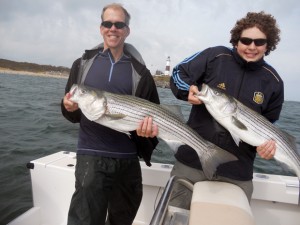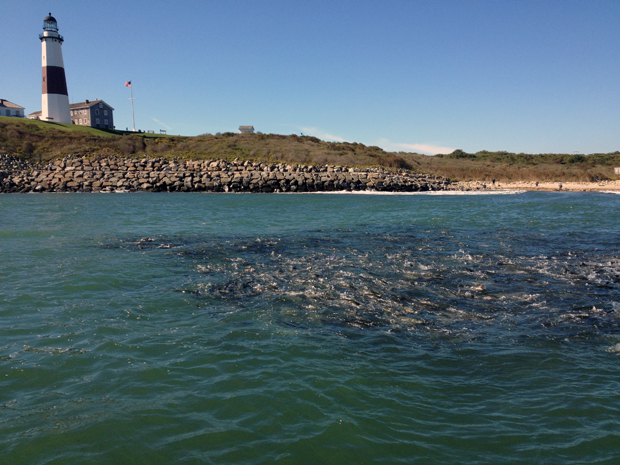Saving Striped Bass
By Michael Crocker / New York Times / May 11, 2014
MONTAUK, New York
[dropcap]A[/dropcap]s summer approaches, the view from Long Island’s easternmost point transforms at dawn as anglers casting for striped bass begin taking their places along the surf. By June, the fish will be racing through these waters on the way to coastal New England as part of their northern migration, a biological spectacle akin to the movement of salmon on the West Coast.
But with the striped bass population in decline, competition for the prized catch has intensified between recreational and commercial fishermen, setting up a showdown over a fishery that generates, according to one study, several billion dollars a year. On Tuesday, fishery managers will begin meeting to decide how best to respond. Their decision could be the most pivotal since the 1980s, when a series of fishing moratoriums wreaked havoc on the industry. As Billy Joel, who was raised on Long Island, lamented in song: “I was a bayman like my father was before. Can’t make a living as a bayman anymore.”

Photo by Capt. Andrew Derr.
Then, as now, there were warning signs that the species was in trouble: Habitat destruction, pollution and overfishing during the previous decade severely reduced its numbers. By 1983, scientists had warned that virtually no new stripers were joining the migration.
And then as now the biggest management challenge is the stripers’ seasonal passage, which takes them through the territorial waters of multiple states on a journey from their primary spawning grounds in the Chesapeake Bay to the coast of Maine.
Since 1981, the Atlantic States Marine Fisheries Commission, with representatives appointed by governors along this route, has managed the striped bass to make sure its numbers remain healthy. But from the start, the commission was crippled by the parochial interests of its members, whose constituents all vied for a cut of the migration. Even after it was clear that the population was on the brink of collapse, the commission was unable to agree on measures to save it.
Finally, in 1984, Congress intervened by passing the Atlantic Striped Bass Conservation Act, which enforced strict limits on the number of fish that could be caught under the threat that it would otherwise ban all recreational and commercial fishing. This move set off waves of protests by commercial fishermen and charter boat captains, who suffered considerably under the new rules.
But the tough action worked
By 1995, the population had recovered enough for the commission to adopt a two-fish-per-day bag limit for recreational fishermen but also increased the minimum size allowed to 28 inches long to allow juveniles to mature and reproduce. States with commercial fishing fleets hashed out an agreement to share their total allowable harvest and to shut down when the quota was reached.


